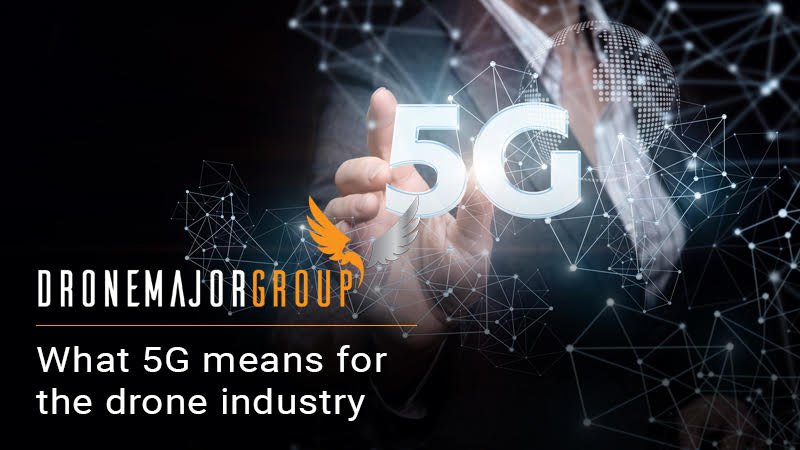Drone Major introduces significant client to Drone Evolution
Words By: Drone Major
Editorial Feature
Words By: Drone Major
5G has been the subject of significant recent media scrutiny, with critics claiming that the high frequency, ultra-fast service is dangerous to overall health, while supporters assert its potential to revolutionise life as we know it by offering 10-20x faster internet speeds than its predecessor, 4G. Regardless of what side you may fall on, it is important to understand the basics of what 5G is and how, if implemented, it could affect activities like drone use.
So, what is 5G? In the most basic sense, 5G is the next generation of internet connectivity. It dramatically increases the efficiency and effectiveness of the pre-existing radio spectrum, allowing more users to access the network simultaneously, whilst maintaining a strong and fast connection. Essentially, 5G means a stronger mobile internet connection, lightning fast web searches and almost immediate connection between users, especially in condensed urban areas. The applications are vast, ranging from seamless data sharing between pilots and ground stations to the immediate updating of hospital records for improved patient care, but the infrastructure needs are an obvious bottleneck in the widespread implementation process.
To take full advantage of the increased speed that 5G offers, small groups of connectivity receptors will need to be placed close together – something that calls into question its effectiveness in rural areas. For that reason, 5G will likely be rolled out first in highly populated, urban locations such as London, New York or Hong Kong. Speculators believe that 5G will be available in cities as early as 2020 through a variety of wireless carriers.

A large number of technologies rely on the internet for proper functionality, so 5G has the potential to drastically change the way that operators interact with their devices. In this regard, what does 5G mean for the drone industry? The most notable differences would be:
Drone Major Group is excited to see where 5G takes the industry and is constantly engaging with relevant suppliers of hardware and software to curate a cluster that both supports and questions innovation where necessary. If you are interested in learning more about drones or engaging with our network, visit us at Drone Major Group.